disturbed
Showing 49–60 of 79 results
-
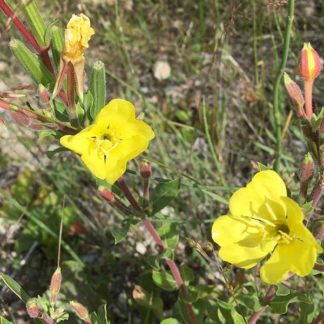
Oenothera villosa / hairy evening primrose
- yellow flowers on tall stalks, several flowers in a cluster
- 4 petals; 8 stamens; large, 4 part stigma
- hairy - often reddish - stems; hairy leaves
- lance-shaped leaves, larger on stem than basal
- disturbed areas and stream banks
-
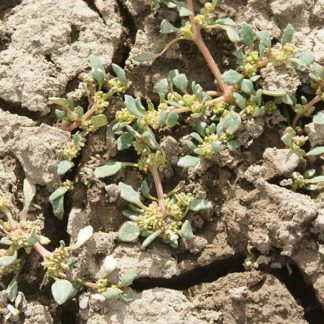
Oxybasis glauca / oak-leaved goosefoot
- typically prostrate and small, apart from other plants
- mudflats and other drying wet areas
- small, blue-green, small-lobed leaves; often w/ reddish stems
- teeny clusters of teeny yellow flowers
- leaves feel cool and damp due to glandular hairs on lower surface
-

Oxytropis sericea / white-point vetch
- white "pea" flowers in clusters of up to 25
- banner petal white with purple/blue veins
- hairy, pinnately compound leaves, all basal
- disturbed areas, especially exposed to cold, drought, high light etc.
- pretty, but toxic to grazing animals
-

Penstemon palmeri / Palmer’s penstemon
- very tall, exposed
- pink flowers with rose/grape scent
- flowers clumped on one side of stem in groups of 4-5
- red "guidelines" (bloody fangs) on lower petals
- stem leaves opposite, clasping, like little boats
-

Phacelia hastata / silverleaf scorpionweed
- flowers - dull white-ish/purple-ish, numerous in short, compact, coiled clusters
- stamens extend well past petals
- leaves - basal with prominent veins; usually covered with silvery hairs; usually entire
- multiple flowering stems on a single plant
- in a variety of habitats
-

Phalaris arundinacea / reed canarygrass
- large, coarse, erect grass
- long, flat blades with pointy tips... from base
- distinct ligule—membranous and long
- large but compact inflorescences (panicles)
- often in dense monocultures, e.g. on river banks
-
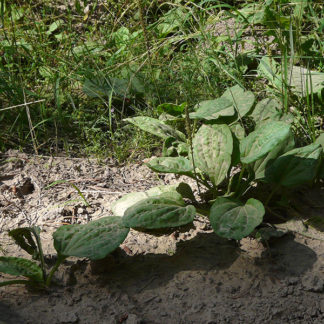
Plantago major / broadleaf plantain
-

Poa bulbosa / bulbous meadow-grass
- short, tuft-forming grass
- funny-looking flower stalks... having bulblets instead of florets
- doesn't produce pollen or seeds
-

Polygonum aviculare / prostrate knotweed
- long, prostrate stems around a central point
- copious red-edged white flowers
- small green leaves
- along roadsides, parking lots and wherever trampling occurs
- an ugly weed you'll see on most of your walks around town
-
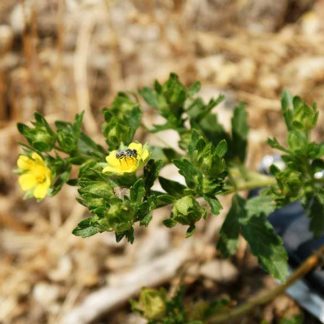
Potentilla norvegica / rough cinquefoil
- 5 yellow petals, not fused
- 5 sepals longer than petals, esp. after flowering
- numerous stamens and pistils
- compound leaves with leaflets grouped in 3s
- prominent veins; toothed margins
- hairy stems
- mostly in disturbed areas, including gardens
-
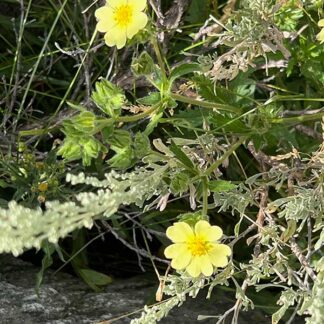
Potentilla recta / sulfur cinquefoil
- perennial
- 8 to 30 stems per plant, each with 1-60 flowers
- petals are light yellow; centers are darker, sulfur yellow
- shiny, erect hairs arise at right angles to the stems.
- leaves are alternate and palmately compound, 5-9 leaflets per leaf
- invades both disturbed and undisturbed habitats
-

Prunella vulgaris / self-heal
- compact spike of tiny purple, mint-like flowers
- upper/lower lips purple and white respectively
- square stems, opposite leaves
Showing 49–60 of 79 results